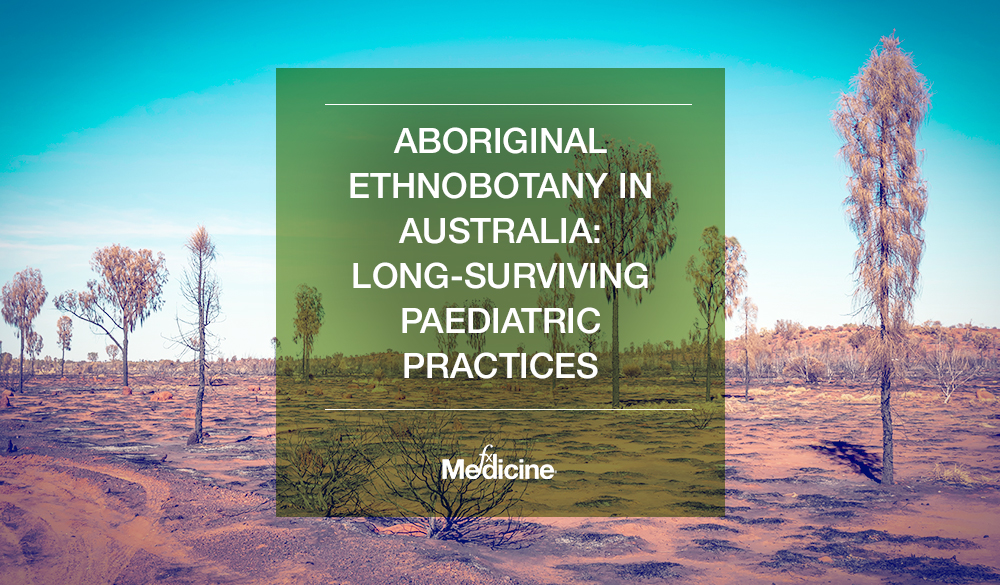Ethnobotany is a term used describe the study of traditional or indigenous plant knowledge and application, which significantly contributes to Aboriginal paediatrics, some of the oldest surviving practices in the world.[1,2] These practices represent 50,000 years of wisdom and cultural evolution.
Considering the waterless and inhospitable environments faced, skills developed in ethnobotany and paediatrics are truly remarkable. Consider a parallel paediatric history, one of which contains virtually no written records. Such lore is preserved through oral traditions by Aboriginal men and women.[2]
Contemporary paediatric practices of over 100 Australian Aboriginal language groups, make up a current discipline originating tens of millennia before that of Western medicine. The connection between Australian Aboriginal culture and the land is well fortified, and thus medical ethnobotany becomes a vital aspect in the care of children.[2]
Traditional tribal healers hold an important professional role and have different names among different language groups. They are called ‘Nunguni’ in some regions of central Australia. Healers are identified in early childhood from 2-4 years old and receive their own unique education involving the healing arts, delivered by community elders.
A sophisticated botanical materia medica is used by healers and traditional communities in the treatment of children. European settlers adopted elements of these botanical ‘cures’, which remain in mainstream western culture today.[2]
Medicines are curated from roots, bark, leaves and flowers as fresh preparations that are rarely stored. Prepared as macerations, decoctions and infusions, they may also be combined with kangaroo or emu fats as emollients for topical administration.
Contemporary Australian ethnobotany derives benefit from the medical properties of over 100 plant groups, wielding extracts such as carminatives, expectorants, hypnotics, sedatives, antipyretics, astringents, analgesics and antiseptics. The widespread use of these extracts may reflect 50 millennia of observation, interpretation, trial and error.[2]
Both general and paediatric Australian medical ethnobotany are characterised by several main features:
- Multipurpose use of several floral species
- Extensive knowledge of the pharmacological properties of flowers, stems, bark, roots and leaves of the whole local florilegium
- Use of botanical ingredients for symptomatic treatment
- Universal medical knowledge of botanical remedies by all members of local Aboriginal communities
- Use of botanical treatments as preventative medicine
Herbal remedies are used by 70% of the world’s population in the treatment of injured or sick children. With this in mind, it’s easy to see why the knowledge of Australian Aboriginal medicine is so important. The origin of 1 in 4 Western proprietary medicines is from medicinal plants. When research was taken out on Australian regions in the early 19th century, almost all species studied were new to Western science.[2]
Aboriginal children have their own roles in the collection of food and medicinal plants, with some foods being principally collected by children. All youths in the communities learn how to prepare medicines and extract their active ingredients. This demonstrates an education of both land and healthcare passed through generations, something that is often lost in Western culture.[2]
The development of paediatric history dates far beyond that of written texts. The knowledge and skills of indigenous communities, if acknowledged with humility, would be valuable information shared.[2]
REFERENCES:


